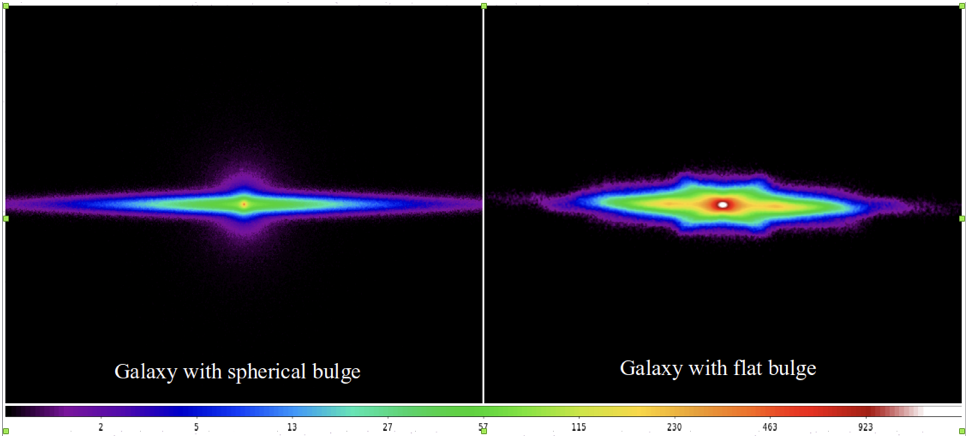A recent study by Indian astronomers has revealed that when a smaller galaxy flies past a much larger galaxy like our own Milky Way, it can trigger the formation of spiral arms in the larger galaxy, thereby changing its structure. These fade away with time. The study shows that galaxy flybys, which have not received adequate attention in astronomical studies, are as important as galaxy mergers in shaping the evolution of these galaxies.
Most galaxies in our universe are clustered together. In a crowded environment, two galaxies can fly past each other or even merge with each other. Such phenomena affect the dynamics and morphology of these galaxies. As opposed to galaxy mergers, where a galaxy can fall into another to become a larger one, fly-bys are where galaxies come close, exert a tremendous gravitational pull on each other, and then go away on their own paths. Both processes have played a crucial role in shaping galaxies through 100s of millions of years. Although mergers have been studied in detail using advanced computer simulations, not much work has been done on fly-bys so far. This is important since present research shows that fly-bys are much more common in the local Universe.
Astronomers, led by Ankit Kumar, a PhD student at the Indian Institute of Astrophysics, an autonomous institute of the Department of Science & Technology, Govt. of India, have done a detailed study of flyby of galaxies where a smaller galaxy comes close to a larger galaxy. He, along with Prof. Mousumi Das of IIA and Dr. Sandeep Kataria of Shanghai Jiao Tong University, investigated the gravitational influence of each of the galaxies on the motion of the stars of the other using state of the art computer simulations.
They generated a disk galaxy similar to our Milky Way and simulated fly-bys of smaller galaxies while varying a range of parameters, like mass of the smaller galaxy, the closest distance they approach, the kind of bulge in the larger galaxy, and so on. They found that when the smaller galaxy passes by the massive galaxy, it triggers the formation of spiral arms in the disk of the latter.
“We used the powerful supercomputers at IIA to follow the motion of individual stars of a fly-by event by generating realistic mock galaxies and evolving them in time,” said Ankit Kumar, the lead author of the paper.
The authors found that closing the distance between the two galaxies in the fly-by, stronger were the spiral arms that were formed. A large fraction of stars goes into the formation of these spiral arms, and as a result, the disk of the galaxy becomes smaller and thicker. As soon as the smaller galaxy leaves the strong gravitational pull of the massive galaxy, the strength of spiral arms starts decreasing, and they weaken. These results signify the importance of satellite galaxies in producing long-lasting spiral arms in the galaxies around which they revolve. The astronomers further concluded that the long-term dynamical evolution of large galaxies can be strongly influenced by multiple fly-bys of smaller galaxies over its lifetime. The results of this study have been published in the journal “Monthly Notices of the Royal Astronomical Society”.
“We saw that the spherical bulges of stars inside the larger galaxies are very stable against flyby interactions because of their dense nature,” said Prof. Mousumi Das of IIA. However, they found that a class of disk galaxies that have 'flat bulges' are indeed affected by close flybys.

Fig1. Visual illustration of flyby orbits of two galaxies.

Fig2. Visual illustration of spherical bulge galaxy and flat bulge galaxy.
Publication Link: https://academic.oup.com/mnras/article-abstract/506/1/98/6307535?redirec...
For more information, contact Ankit Kumar (ankit[dot]kumar[at]iiap[dot]res[dot]in).






























